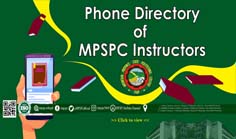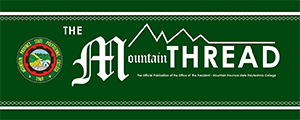Common Problems of Teacher Education Students Using Money Problem Checklist: Academic and Guidance Implications
(Hilary L. Tican)
INTRODUCTION
Academic life is a tough life which only those who possess the required level of mental ability, proper attitudes and appropriate skills can survive. In the end, a successful academic life highly depends on the students themselves. On the other hand, the academic institution is duty bound to address the problems that affect students as they pursue their career. As in scientific method, problem identification is the best way to start.
The need to identify student problems stems from the overall role that the academe plays in relation to its most important clientele—the students. Their holistic development is an interplay of the various aspects of life – physical, social, psychological, emotional, moral and spiritual. They are endowed with potentialities that continuously unfold. They have many expectations in life that increase as they advance in their college life. Hence, college life is so crucial as it is in this stage that students’ potentialities need to be appropriately nurtured and developed, and their academic expectations have to be well directed to be realized. These, however, do not always happen smoothly. Various obstacles must be hurdled, not only by the students themselves, but the academic institution itself through its faculty and its offices that cater to student services and development.
Obstacles during college life may be related to health, finance, relationships, and even attitudes. In addition, there are challenges that often arise from tough academic requirements. The proper handling of these obstacles and challenges which are the student problems per se may lead to positive results. Unresolved, however, these problems may lead to behavior disorders, which as Lloyd (2009) stresses “disrupt relations with peers and adults and interfere with schooling.”
Studies reveal common student problems in academic institutions. Using Mooney Problem Checklist, Miller, Hawkins & Wheeler (1988) found out the following top overall concerns of students: not getting enough sleep, wanting to feel close to God, too little time for myself, missing someone back home, and easily distracted from my work/study.
An earlier study by Belen (1983) using the same instrument revealed, among others, “The most predominant problem areas of the students were academic, future and finance and the least were girl/boy relation, religion and health. The variables of age, sex, school session, curricular year significantly influenced the student problem areas except for the variable of academic achievement.”
Even with today’s technological development, the same common problems are being observed. At the Mountain Province State Polytechnic College, student problems such as dropping out, truancy, and having incomplete grades can be attributed to various distractions. Lack of finance and early marriage are also initially seen as some of the perennial concerns of the institution.
Student problems need therefore to be surveyed for inputs that serve as bases for enriching the guidance program to deal with student concerns that negatively affect their academic and personal life. Also, said survey helps students develop their potentialities and realize their expectations.

















